by BA Nester
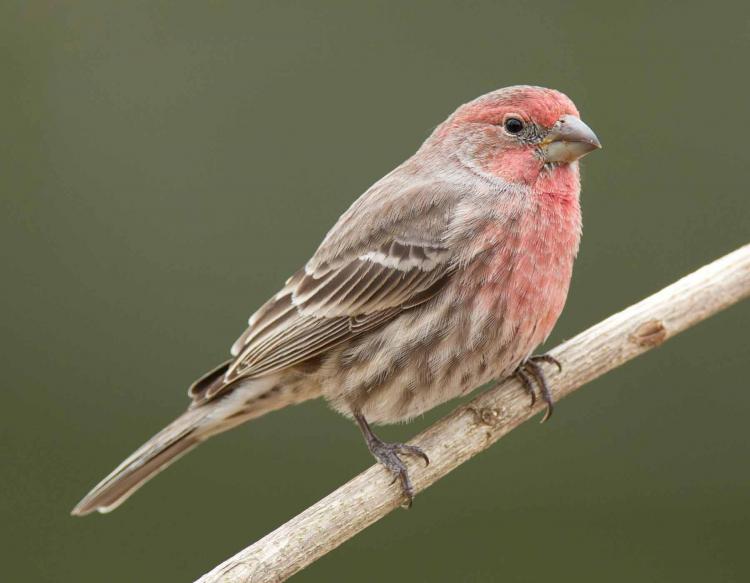
One of the most common, busy and pretty birds at our feeders is the House Finch … the pretty red males, the muted brown females and their babies, cousins, sisters and brothers! Yup! You don’t get just ONE House Finch! They are aptly described as gregarious! If you put out multiple feeders with black oil sunflower seeds, they will come …. lots of them!!!

Like any number of birds, the House Finch that was common in one part of the world (Western North America and Mexico), were then introduced to other parts of the world (Eastern North America and Hawaii). In the case of the pretty House Finch, they were much more welcomed than some others like the European Starling and House Sparrow. I am always interested in how they were introduced. The story goes like this: In 1940, some entreprenuial types took a smallish number of House Finches from the Western US to sell in New York as “Hollywood Finches”. When they didn’t sell, they released the Finches on Long Island! The birds promptly went about doing what they do naturally and within 50 years they had spread across much of Southern Canada and most of the Eastern states!
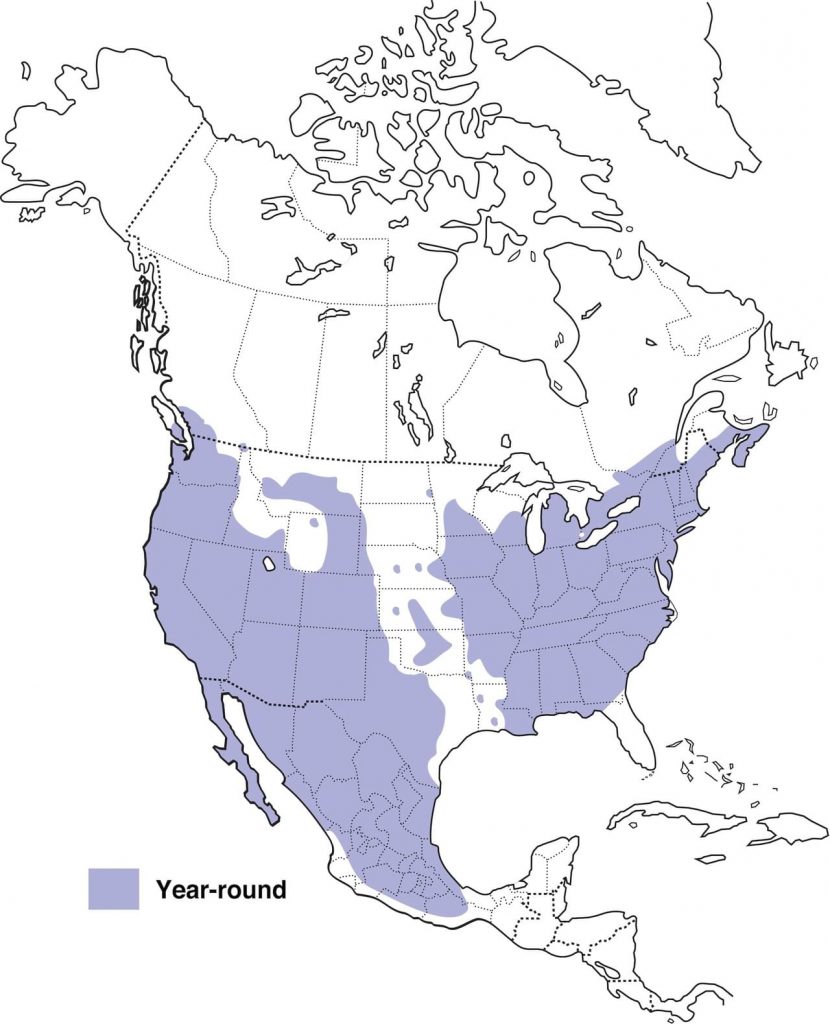
If you haven’t spotted a House Finch in your parks or backyards, let me describe them for you. They are a smallish finch, about the size of a sparrow. They have a thick, curved, conical bill, perfect for seed-eating. Most finches have a notched tail, but the House Finch’s is not as deeply notched as some, so you have to look a little more closely. The males have pretty red faces and upper breasts. Their bellies and tails are streaky brown and white. The red coloring on the males comes from the food they eat while they are molting and regrowing their new feathers. That’s why sometimes you see more yellow-ish or orange-ish males. Truth be told, the females prefer the brightest red males!!! The females and immatures are, of course, much more muted being brown all-over with kind of blurry, streaky bellies! They are the perfect example of a LBB, Little Brown Bird!
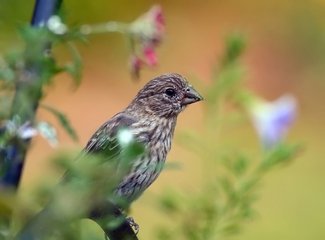
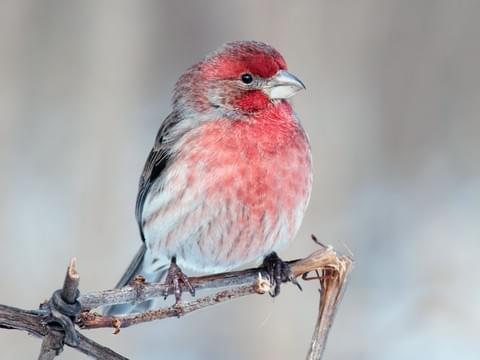
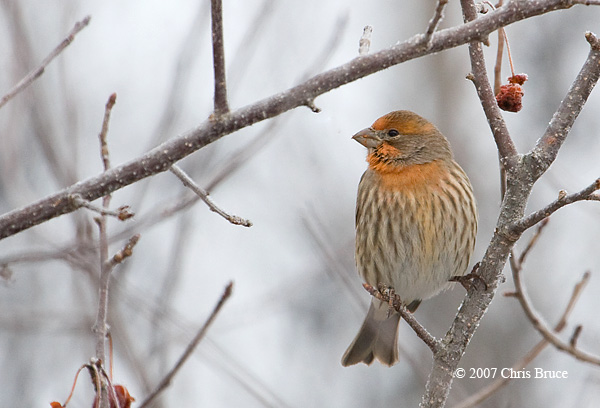

House Finches are almost exclusively vegetarians. In the wild they eat seeds, buds and fruits like thistle, mulberry, cactus and wild mustard seed. They are not a friend to orchards as they love to eat the cherries, plums, figs, apricots, peaches and all of the berries as much as we do! They are easy feeders at our backyard bird feeders, both tube feeders and platform feeders. They prefer the small, softer-shelled black oil sunflower seeds to the tougher shells of the striped sunflowers. They also enjoy safflower seeds, millet and milo. And don’t forget to keep your birdbath filled with fresh water so they can drink and bathe!

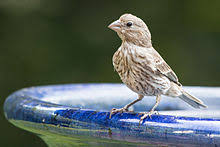
As far as nesting sites go, the House Finch isn’t very picky. They will build their nest in any kind of tree or even on rock ledges. They also nest on man-made structures, everything from street lamps, house ledges to hanging planters and ivy! They’re even been known to use other birds’ nests! Not picky at all!
They build a delicate nest out of fine twigs, vines and the like with the inside of the cup measuring about 1-3” across and up to 2” deep. They are happy to use man-made products like string, yarn, wool and feathers to line the inside for the eggs. They will lay eggs 2 – 6 times a year, with 2-6 eggs per brood. That makes for LOTS of little House Finches!
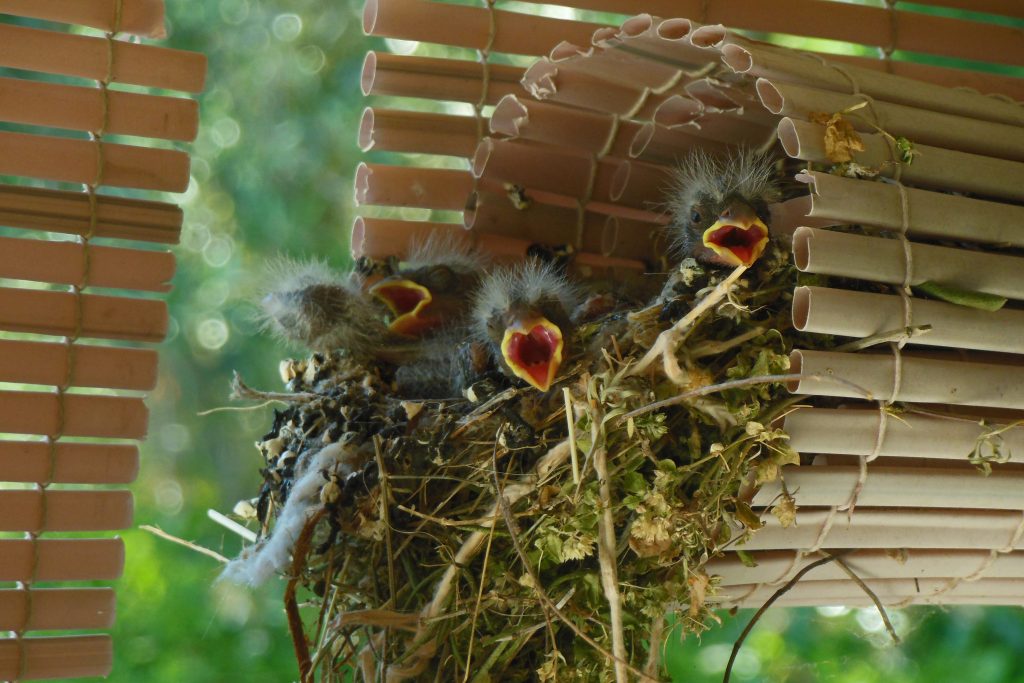
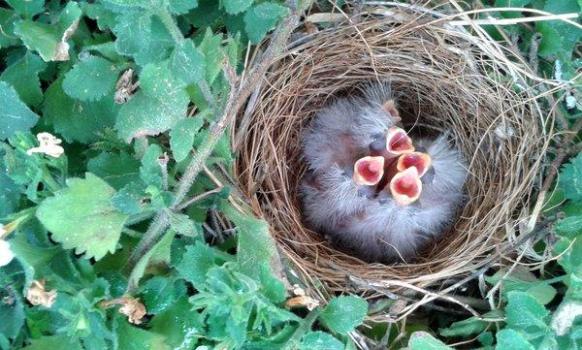
I have enjoyed sitting at my kitchen table, watching the antics of the House Finches. It’s really fun at mating time to watch the males feed the females as part of their courting ritual. The females flutter their wings kind of like the fledglings do when they are begging for food, and gently pick at the male’s bill. Then he simulates regurgitating the food several times before he actually feeds her. Gross! I’ll take a nice candlelit meal of lobster and wine ANY time!!!
Because I participate in the Cornell Lab Project FeederWatch, I have learned that the House Finch suffers from a disease called mycoplasmal conjunctivitis. The disease causes respiratory problems and red, swollen eyes, making them susceptible to predators and adverse weather. When you do your counts you look carefully for the signs of the disease and report any you spot. It feels good to be a Citizen Scientist and help out the birds we all love! Fortunately, all of the Finches I have seen at my feeders have been clear-eyed!

If you have yet to spot a pretty red House Finch, take a pair of binocs and walk through you local park and public gardens, or take a ride into the country and check out barnyards! I’m sure you’ll spot a family of House Finches happily conversing and feeding away! Put out your feeders and they will come!
